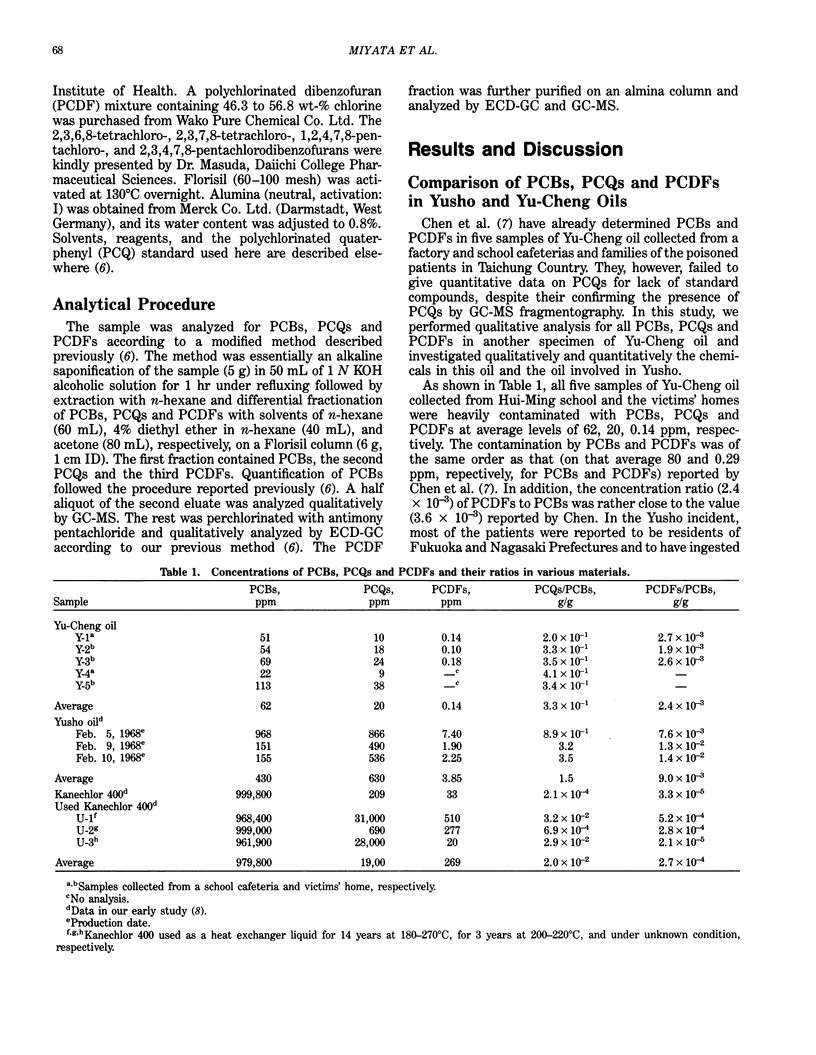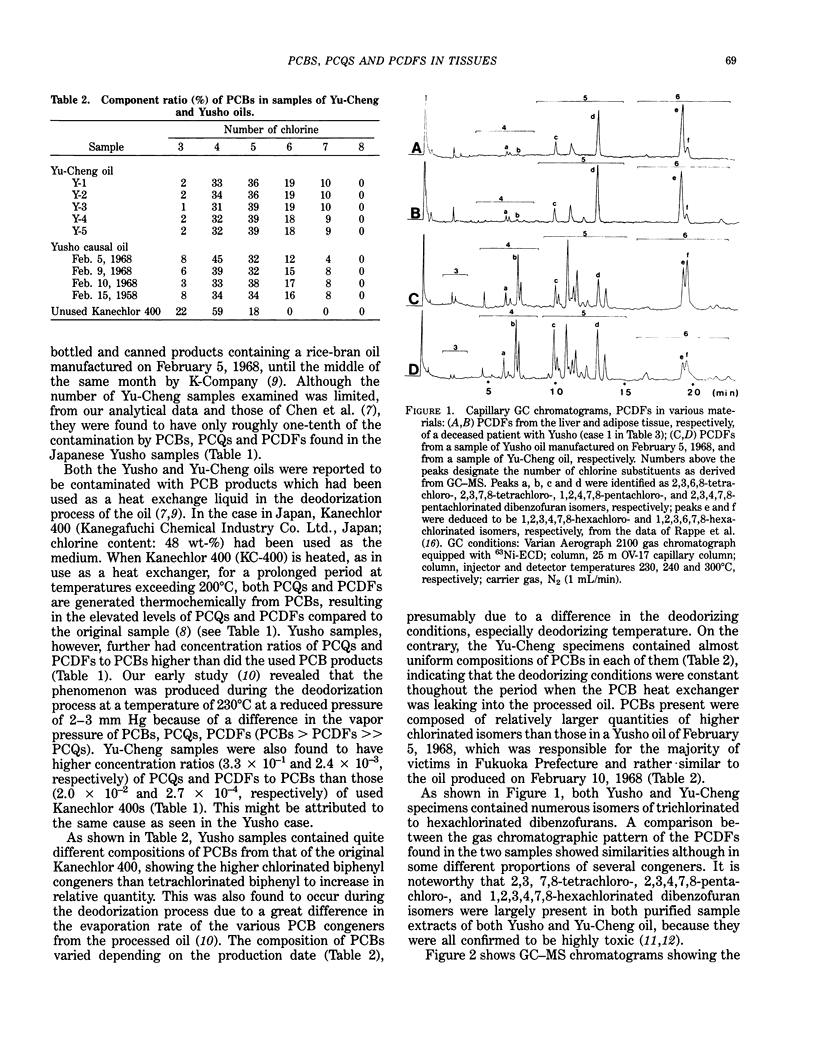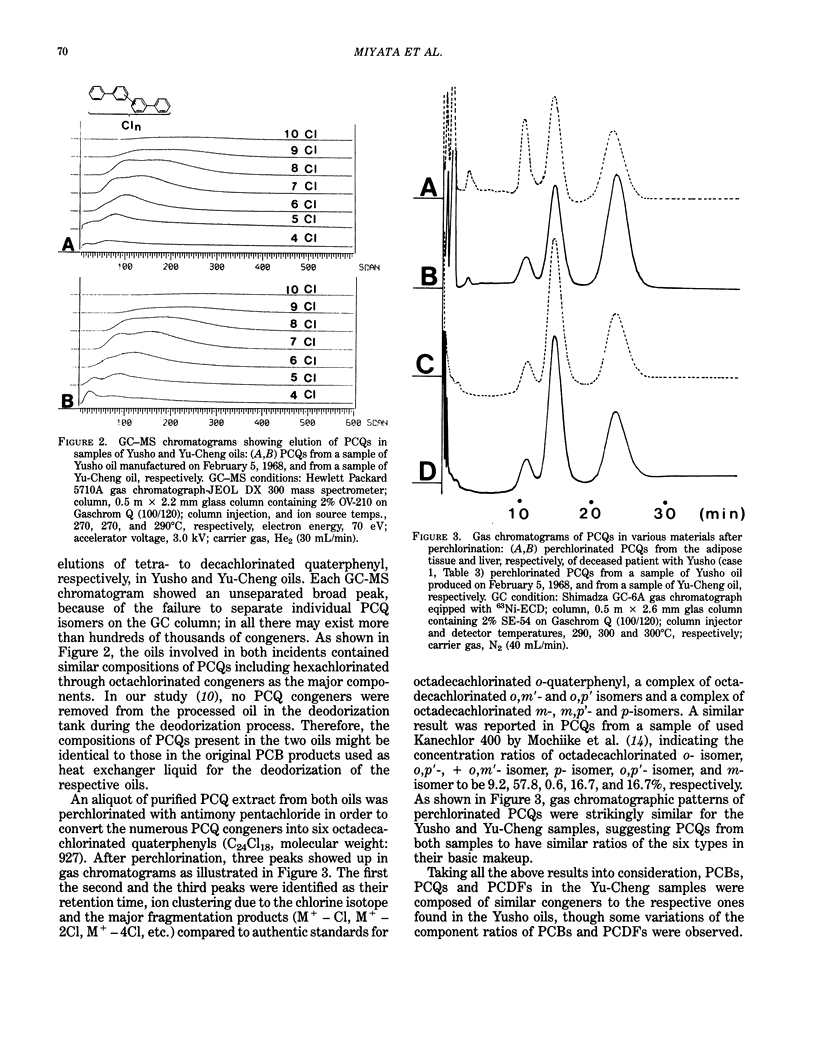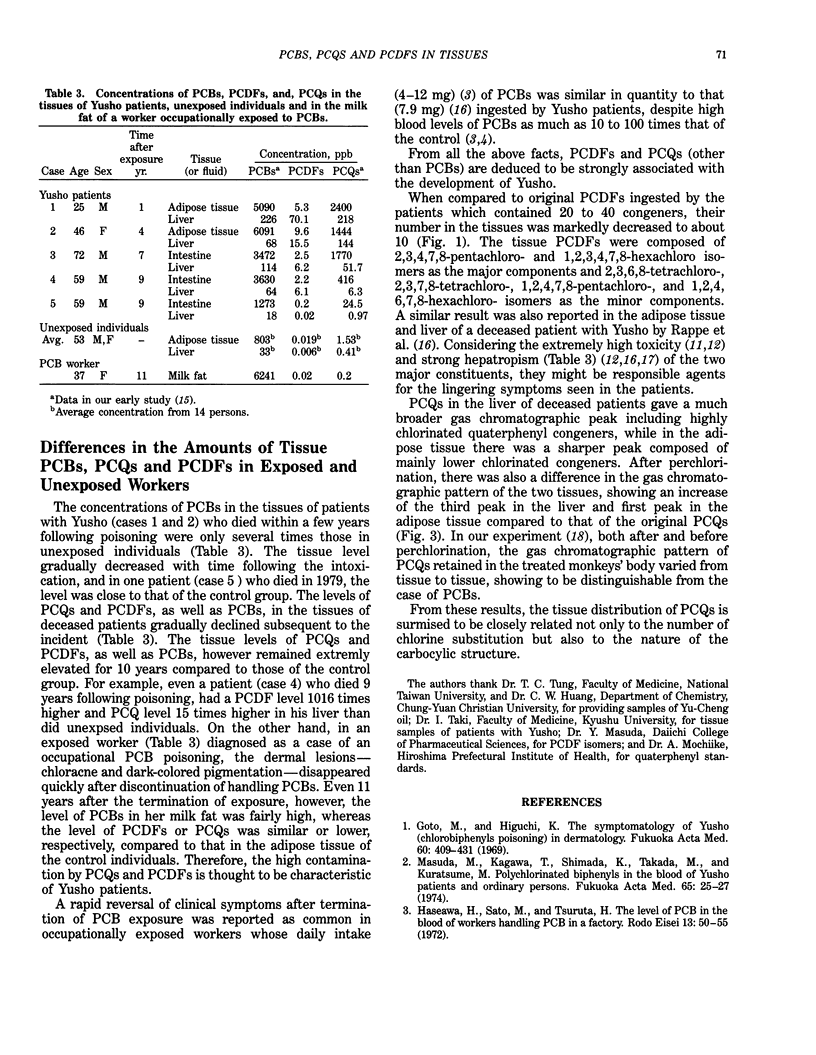Abstract
All five samples of oil involved in the recent yu-cheng outbreak were heavily contaminated with PCBs, PCQs and PCDFs at levels, on the average, of 62, 20 and 0.14 ppm, respectively. The samples not only had roughly one-tenth of the contamination by PCBs, PCQs and PCDFs but also three to four times lower ratios of PCQs and PCDFs to PCBs than samples of oil involved in yusho in Japan. PCBs, PCQs and PCDFs present were all composed of similar congeners to the ones found in the yusho specimens, though some variation of the component ratios of PCBs and PCDFs were observed. On the other hand, five patients with yusho who died 1 to 10 years following poisoning had markedly higher tissue levels of PCDFs and PCQs than did a worker occupationally exposed to PCBs. Taking great differences in the process of the healing and the tissue levels of PCBs, PCQs and PCDFs between the two poisoning cases into consideration, PCDFs and PCQs--especially the former--and not PCBs are deduced to be strongly associated with the development of yusho.
Full text
PDF





Selected References
These references are in PubMed. This may not be the complete list of references from this article.
- Decad G. M., Birnbaum L. S., Matthews H. B. 2,3,7,8-Tetrachlorodibenzofuran tissue distribution and excretion in guinea pig. Toxicol Appl Pharmacol. 1981 Feb;57(2):231–240. doi: 10.1016/0041-008x(81)90284-2. [DOI] [PubMed] [Google Scholar]
- Kashimoto T., Miyata H., Fukushima S., Kunita N. [Differences of residual chlorinated compounds between yusho patients and persons exposed to PCB (author's transl)]. Fukuoka Igaku Zasshi. 1981 Apr;72(4):198–204. [PubMed] [Google Scholar]
- Kashimoto T., Miyata H., Kunita N. The presence of polychlorinated quaterphenyls in the tissue of yusho victims. Food Cosmet Toxicol. 1981 Jun;19(3):335–340. doi: 10.1016/0015-6264(81)90392-8. [DOI] [PubMed] [Google Scholar]
- Kuroki H., Masuda Y., Yoshihara S., Yoshimura H. Accumulation of polychlorinated dibenzofurans in the livers of monkeys and rats. Food Cosmet Toxicol. 1980 Aug;18(4):387–392. doi: 10.1016/0015-6264(80)90195-9. [DOI] [PubMed] [Google Scholar]
- Yoshihara S., Nagata K., Yoshimura H., Kuroki H., Masuda Y. Inductive effect on hepatic enzymes and acute toxicity of individual polychlorinated dibenzofuran congeners in rats. Toxicol Appl Pharmacol. 1981 Jul;59(3):580–588. doi: 10.1016/0041-008x(81)90313-6. [DOI] [PubMed] [Google Scholar]


